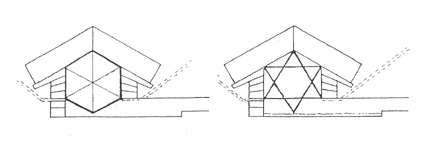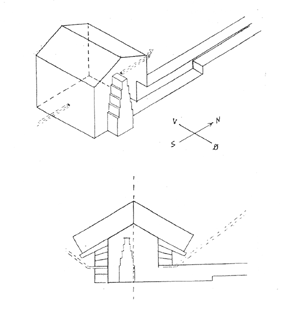|
Air shafts
Claiming that all - or almost all - in the pyramid was made intentionally and with a clear purpose, we are left with one more riddle here, namely the air shafts. They differ from the ones in the King's chamber in having been blocked at the chamber end by 10 cm of stone. Standing in the chamber you would not be able to see the shafts; they were found and opened in
1872 by an archaeologist who deducted their existence from the air shafts in the King's
chamber (W.Dixon).
The southern air shaft is still blocked inside by a stone. This is the famous stone discovered by Rudolf
Gantenbrink. There seems to be remnants of copper handles on the stone.
Gantenbrink's robot crawled up from the Queen's chamber opening so the robot must have taken the photo from below. The big question is: - What's on the other side?
Well the simplest answer is: the copper handle to which a rope was attatched, to make it possible to open the plug by pulling it
upwards. (Now a hole has been drilled, but the camera just found another
blockage)
There can be many ideas about what the plug hides and why it is there. Of course I ask myself if it helps knowing that this was the chamber of TEFNUT, goddess for the dynamic and magically moving water? I believe this to be facts then:
1)There is a plug,
2)the shaft used to be blocked in the other end too, and
3)it could have something to do with water...
4)there could be water on the floor inside the chamber.
Okay, here's a wild guess on the idea: maybe the plug just served the sole purpose to assertain that the shaft would not be filled with dirt and rubble. A simple precaution. There would be no way to clean the dead end shaft from the top.
If cold water was poured down in it, what would happen?
1)The square brick at the chamber end would be cooled down.
2)If you ever have been inside the pyramid you have experienced how warm it is. If the floor in Tefnut's chamber was covered by 20 cm of water there would be a pretty damp atmosphere.
3)As we know it from cold windows, damp condenses on cold areas. So standing in the room you would "see how water penetrates stone and slowly drips down to end on the floor".
The magical element.
|


